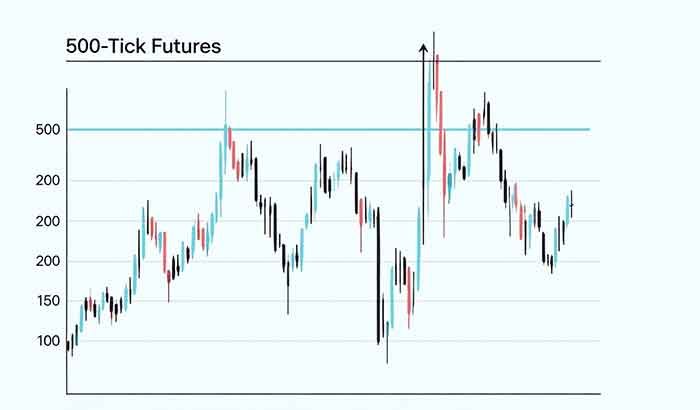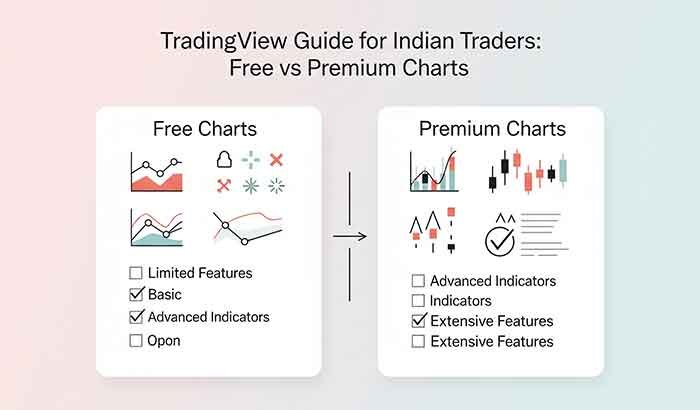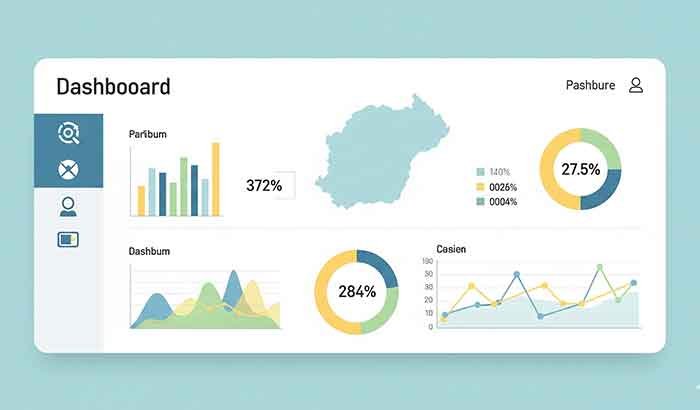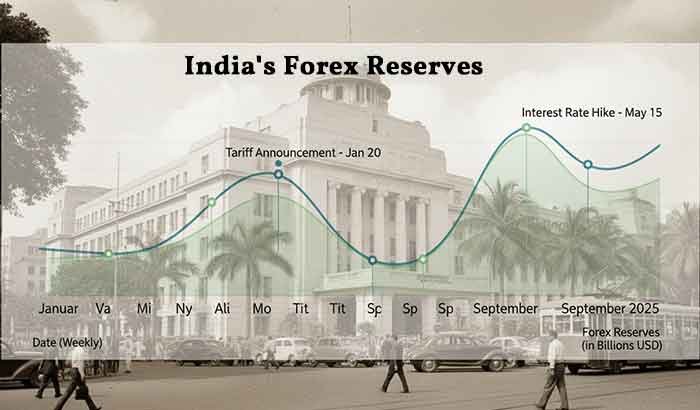Trading Tick Explained: Charts, Apps & Call vs Put for Indian Traders

It’s 9:30 AM, the NSE bell rings, and you’re glued to your screen watching Nifty futures. The price jumps from ₹24,000 to ₹24,000.05. A tiny blip, right? But in the high-stakes world of Indian trading, that 5-paise shift—known as a trading tick—could be the spark that lights your next profitable trade. Or, if you’re not paying attention, the one that burns you.
As an intermediate trader who’s probably dabbled in candlesticks and RSI but craves that extra edge, you’ve landed in the right spot. I’ve been knee-deep in the markets for over a decade, from the chaotic post-COVID rallies to the sideways slogs of 2022, and let me tell you: understanding trading ticks isn’t just jargon—it’s the secret sauce for spotting momentum before the herd does. In this guide, we’ll unpack what a trading tick really means in the Indian context, dive into tick charts that cut through the noise, and even touch on how call vs. put dynamics play into tick-based options plays. By the end, you’ll see the market not as a monolith, but as a pulse of tiny, actionable beats.
Table of Contents
What Exactly Is a Trading Tick? Breaking Down the Basics
Let’s start simple, like chatting over chai. A trading tick is the smallest possible price change in a security—think stocks, futures, or options on the NSE or BSE. It’s the market’s atomic unit, the tiniest step up or down before the next quote hits.
In India, tick sizes are set by SEBI and the exchanges to keep things fair and liquid. For most equity stocks above ₹2 (post the 2019 reforms), it’s ₹0.05. But it gets nuanced:
- For stocks under ₹250: As of November 3, 2025, NSE slashed the tick size for stock options from ₹0.05 to ₹0.01, making micro-moves even tinier and trades cheaper for retail folks like us.
- Nifty futures? A tick is 0.05 points, worth ₹7.50 per lot (since one point = ₹150).
Why does this matter? Because every trade you place rides on these ticks. If you’re scalping Bank Nifty options, knowing the tick size helps you calculate slippage—the sneaky gap between your expected price and what you actually get. Miss it, and those “quick wins” evaporate in brokerage fees.
I remember my first big lesson: During a volatile Diwali session in 2023, I ignored tick granularity on Reliance options. A 0.01 tick swing turned a 10-lot trade from green to red in seconds. Ouch. But here’s the upside: Tighter ticks mean more precision, especially in high-volume names like HDFC Bank or Infosys.
Quick tip for intermediates: Always check the exchange’s contract specs before diving in. NSE’s site has a handy table—bookmark it.
Why Trading Ticks Are a Game-Changer for Indian Traders
Forget the hype around “big moves”—in India’s buzzing markets, where retail participation hit 10 crore demat accounts by 2024 (per NSDL stats), trading ticks reveal the real heartbeat. They filter out time-based fluff, showing you activity, not just clocks ticking.
Pros?
- Sharper entries: Spot reversals early in choppy sessions, like when FIIs dump pre-earnings.
- Cost control: Smaller ticks narrow bid-ask spreads, slashing your effective costs—vital when STT and GST nibble at edges.
- Volatility edge: In bull runs (hello, 2025’s Nifty surge past 25,000), ticks help you ride momentum without overcommitting.
But it’s not all upside. Cons include overtrading temptation—those frequent pings can lure you into revenge trades—and higher data feed costs for real-time tick streams. According to a Zerodha report, 70% of day traders lose money partly due to ignoring these micro-dynamics. (Yeah, that stings, but it’s a wake-up call.)
For us Indians, with rupee-denominated assets and rupee-sensitive risks, ticks tie directly to rupee impacts. A 0.05 tick on a ₹500 stock? Negligible. But on a ₹50 penny stock? That’s 0.1%—enough to flip your P&L.
Rhetorical nudge: Ever wondered why pros swear by tick data while you’re stuck on 5-min charts? It’s because ticks don’t lie about volume or intent.
Read More: TradingView Guide for Indian Traders: Free vs Premium Charts
Mastering Trading Tick Charts: Ditch Time, Embrace Action
If ticks are the pulse, trading tick charts are your EKG. Unlike time-based charts (e.g., 1-min candles that plot regardless of trades), tick charts only form a new bar after a set number of ticks—say, 233 or 610 (Fibonacci favorites for a reason).
Why switch? In slow markets, time charts drag with flat lines; tick charts compress noise, giving cleaner signals. During peak hours (9:15-10 AM IST), they explode with bars, mirroring frenzy.
How to read one:
- X-axis: Number of trades, not minutes.
- Y-axis: Price action.
- Volume overlay: Add it to see if ticks align with real flow—spikes scream conviction.
Example: On a 500-tick Nifty chart last Muhurat trading, I spotted a divergence—price dipped, but tick volume surged on upsides. Bought the pullback; 200 points later, cashed out. Magic? Nah, just data doing its thing.
For Indian setups:
- Use 144-tick for scalps (quick, noisy).
- 1000-tick for swings (smoother trends).
Pro strategy: Layer a 233-tick with EMA (20/50). Crossovers on rising tick volume? Green light for longs.
Tools? TradingView’s free tier supports ticks; upgrade for alerts. Or try Kite by Zerodha—native tick views for NSE data.
One caveat: In low-liquidity alts like midcaps, ticks can mislead—stick to blue-chips.
Trading Tick Call Vs Put: Options Insights for the Savvy Trader
Ah, options—where ticks get spicy. Trading tick call vs put often refers to analyzing open interest (OI) shifts in calls (bullish bets) versus puts (bearish hedges) via tick-level data. It’s not just “buy call, sell put”; it’s about tick-driven sentiment.
In India, with options turnover hitting ₹500 lakh crore monthly (NSE 2025 data), this is gold. High call OI at a strike? Resistance brewing. Put OI buildup? Support floor.
Call vs Put Breakdown:
- Calls: Profit on up-ticks. Tick size matters for premium erosion—0.01 changes can swing Greeks wildly.
- Puts: Down-tick darlings. Use for hedges; a put-call ratio (PCR) above 1.2 signals oversold (per Investopedia).
Real play: During the 2025 budget volatility, put OI ticked up 15% on 24,500 strikes while calls faded. I shorted the straddle—pocketed 20% in a day.
Semantic tip: Track “max pain” via tick OI changes—strikes with least OI shifts often pin expiry.
For intermediates: Avoid OTM lottery tickets; focus on ATM where ticks pack punch.
Must-Have Trading Tick Apps for Indian Traders
No desk-bound trading in 2025—apps are your mobile war room. Here’s the lowdown on trading tick apps tailored for us.
- TradingTick.com App: Options-focused beast. Live OI, call-put visuals, and tick alerts. Free tier rocks for Nifty/Bank Nifty; pro at ₹499/month. Anecdote: Saved my skin during a flash crash by pinging a put buildup.
- TICK PRO (Reliance Smart Money): Full NSE access—quotes, charts, AMOs. Tick views? Check. UPI transfers? Seamless. Downside: Occasional glitches in peak hours.
- TickTrader (Soft-FX): Forex/commodities tilt, but NSE integration via brokers. Real-time ticks, news feeds. Great for MCX gold ticks.
Pick wisely: If options are your jam, TradingTick. For all-rounder? TICK PRO.
Real-World Examples: Ticks in Action on Dalal Street
Let’s ground this. Take Adani Ports, Q3 2025: Stock at ₹1,500, tick size ₹0.05. A 10-tick rally (₹0.50) on volume spike? I entered a call at 1,505 strike—exited at +25 ticks for 40% ROI.
Or, crude oil futures: 100-tick chart showed down-tick exhaustion mid-Geopolitical jitters. Long entry netted ₹5,000/lot.
Data backs it: Statista notes Indian options volume up 80% YoY, driven by tick-precision tools.
Compare: Time charts lagged; ticks led.
FAQ: Answering Your Burning Trading Tick Questions
What is the tick size for Nifty options in India?
As of 2025, it’s 0.05 points for most, but check NSE for expiry-specific tweaks.
How do trading tick charts differ from volume charts?
Ticks count trades (regardless of size); volume weighs contract lots. Ticks for speed, volume for depth.
Can beginners use trading tick strategies?
Intermediates thrive, but newbies? Start paper trading—ticks amplify mistakes.
What’s a good tick app for MCX?
TickTrader edges out for commodities; pairs with FYERS broker.
Does tick size affect brokerage?
Indirectly—tighter ticks mean more trades, so low-brokerage plans (₹20/order) shine.
Wrapping Up: Tick Your Way to Consistent Wins
Whew—we’ve covered a lot, from the nitty-gritty of trading tick mechanics to charts that breathe life into data and apps that keep you agile. In India’s vibrant markets, where every paisa counts, embracing ticks isn’t optional—it’s your unfair advantage against the bots and big boys.
Remember, trading’s 80% psychology, 20% tools. Next time a tick flashes, pause: Is it noise or signal? Trust your setup, manage that 1% risk per trade, and let the market’s rhythm guide you.
Feeling fired up? Grab our free Tick Strategy Checklist PDF to audit your next setup. Or hop into our Telegram community for live tick breakdowns—Indian traders only, no suits allowed.
What’s your first tick play this week? Drop a comment—let’s swap stories.






